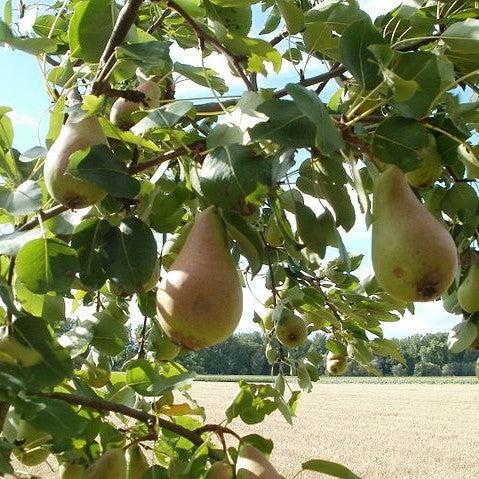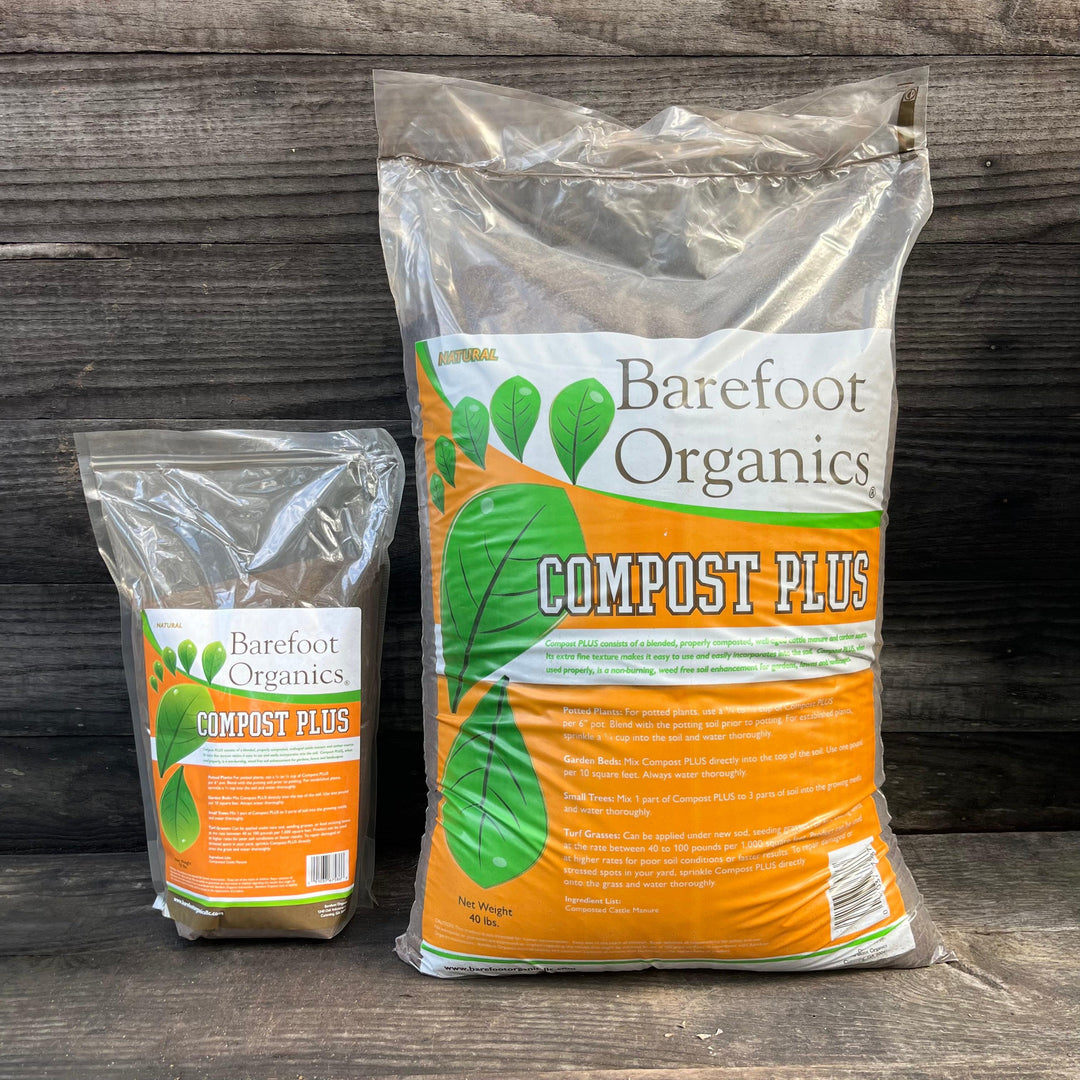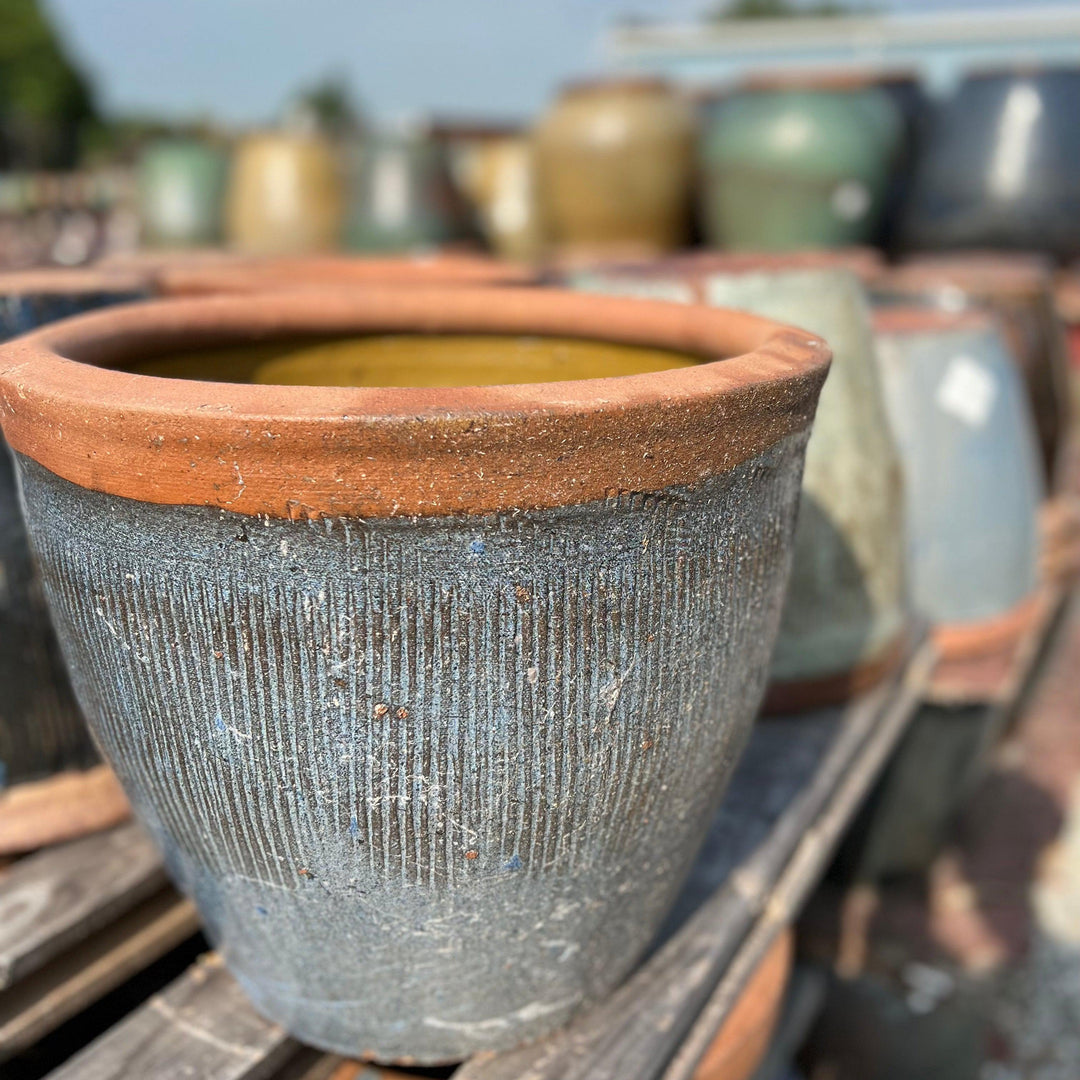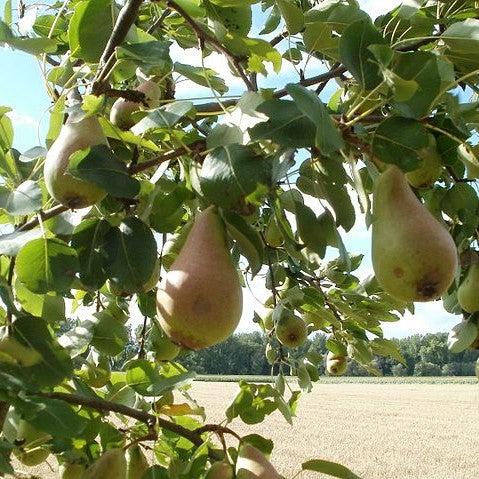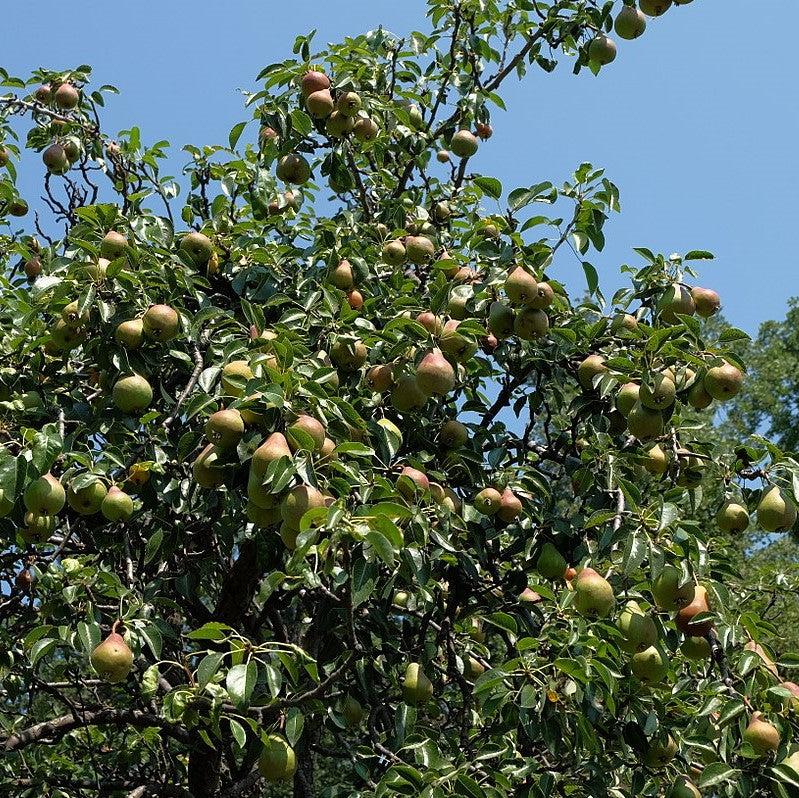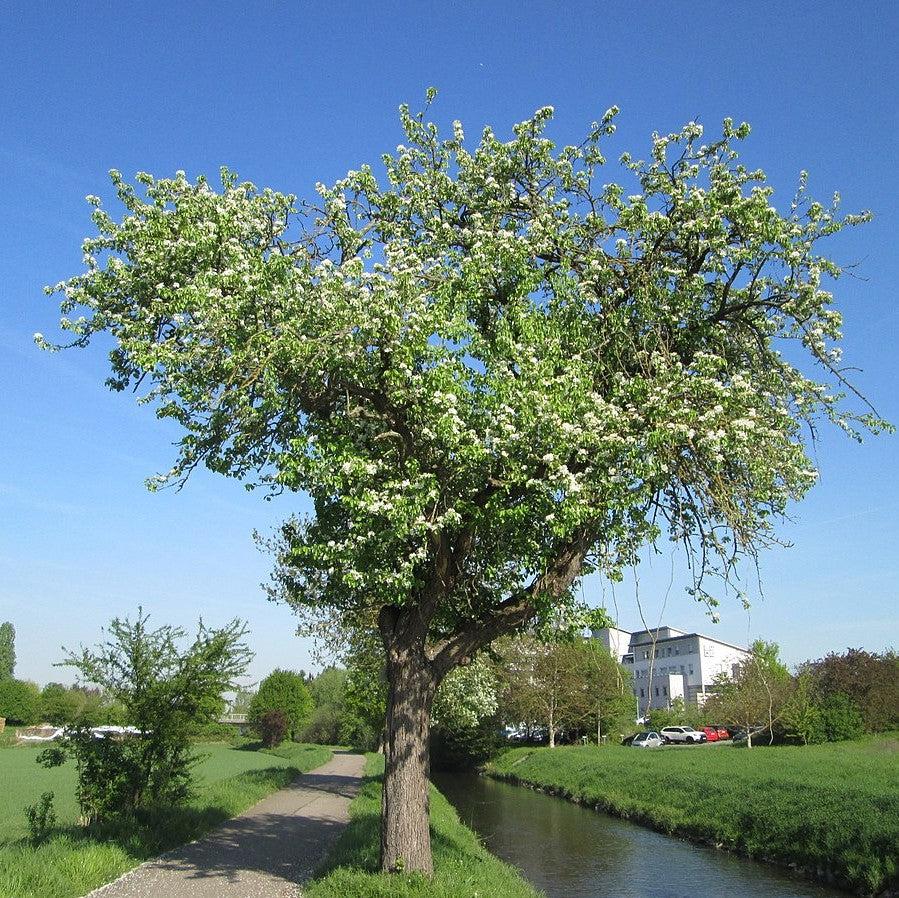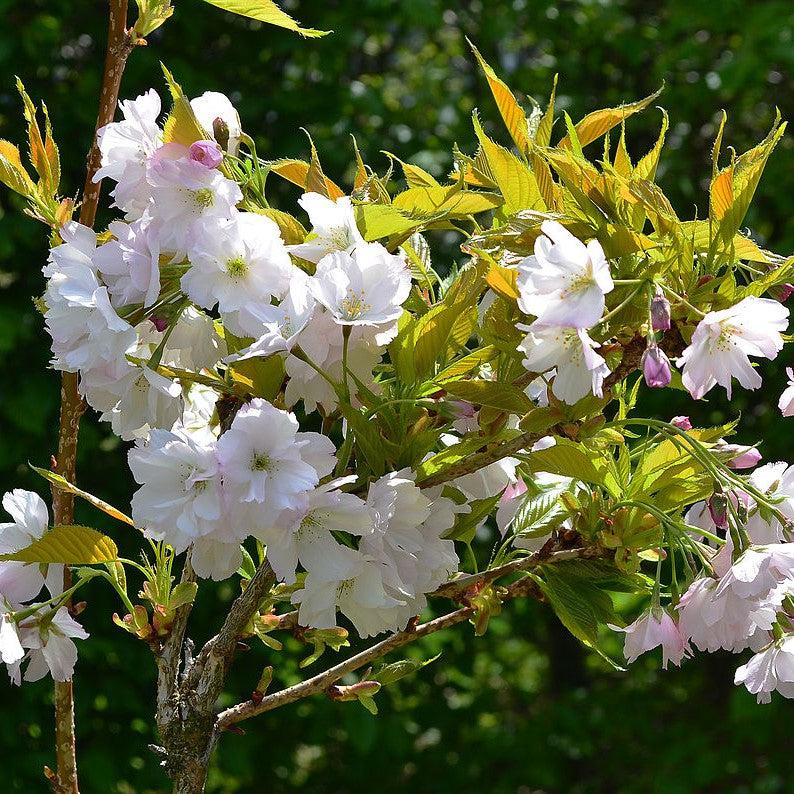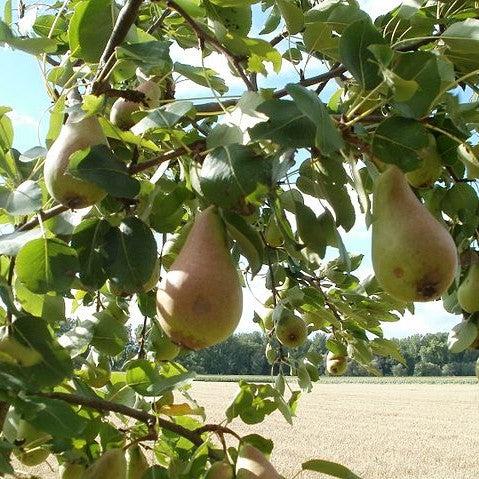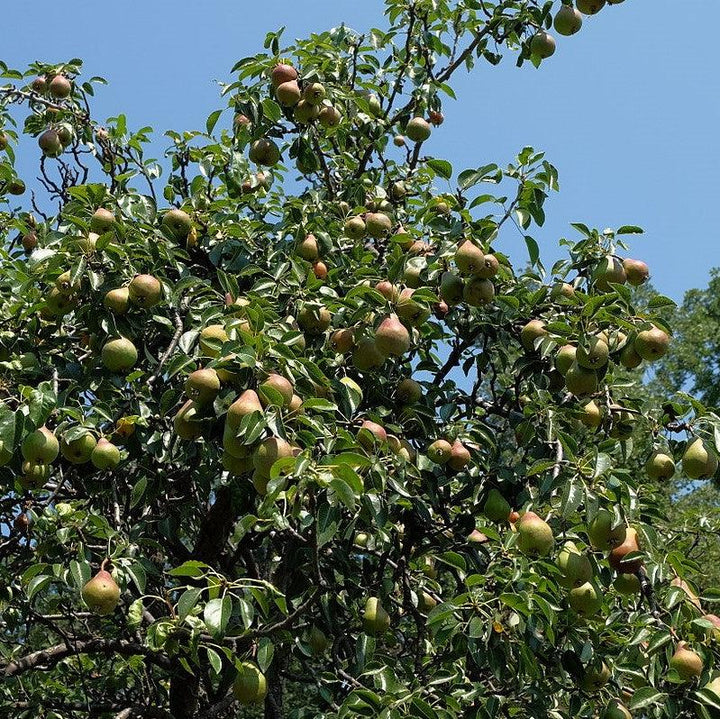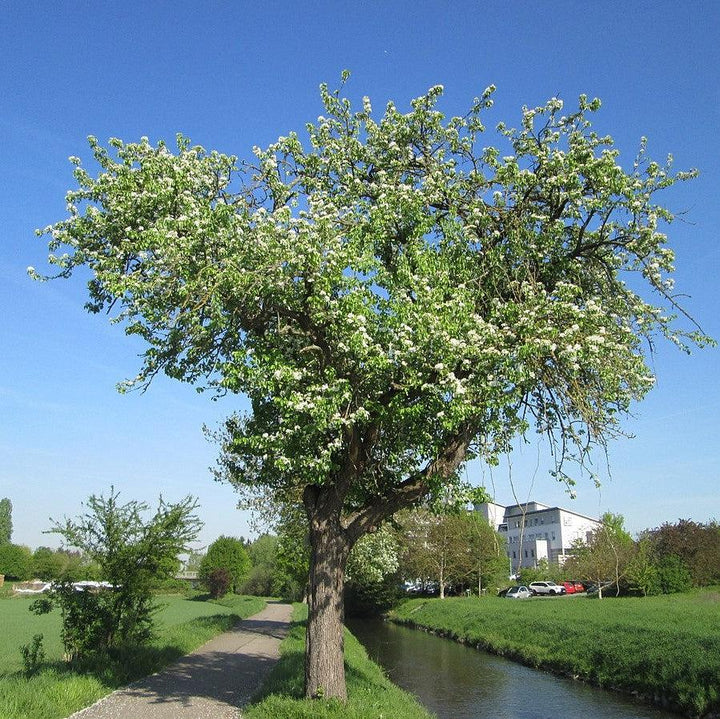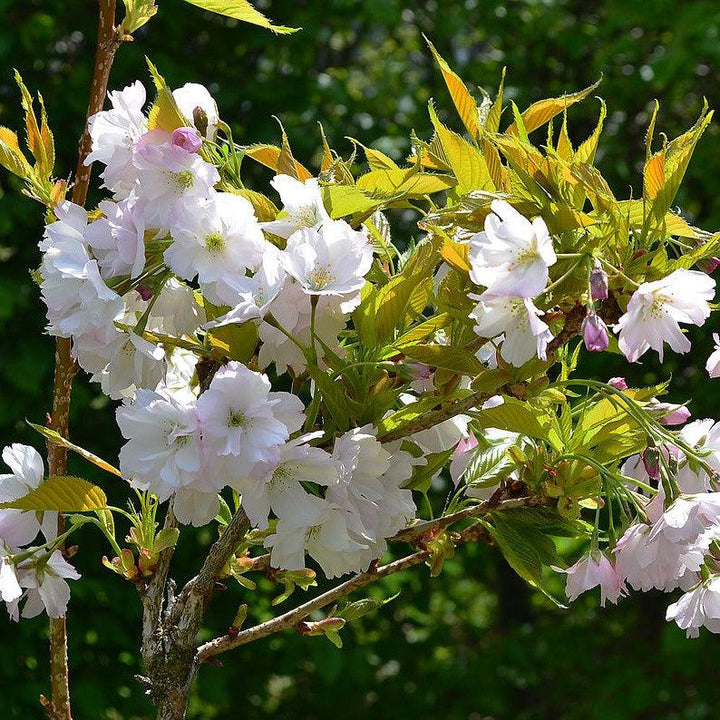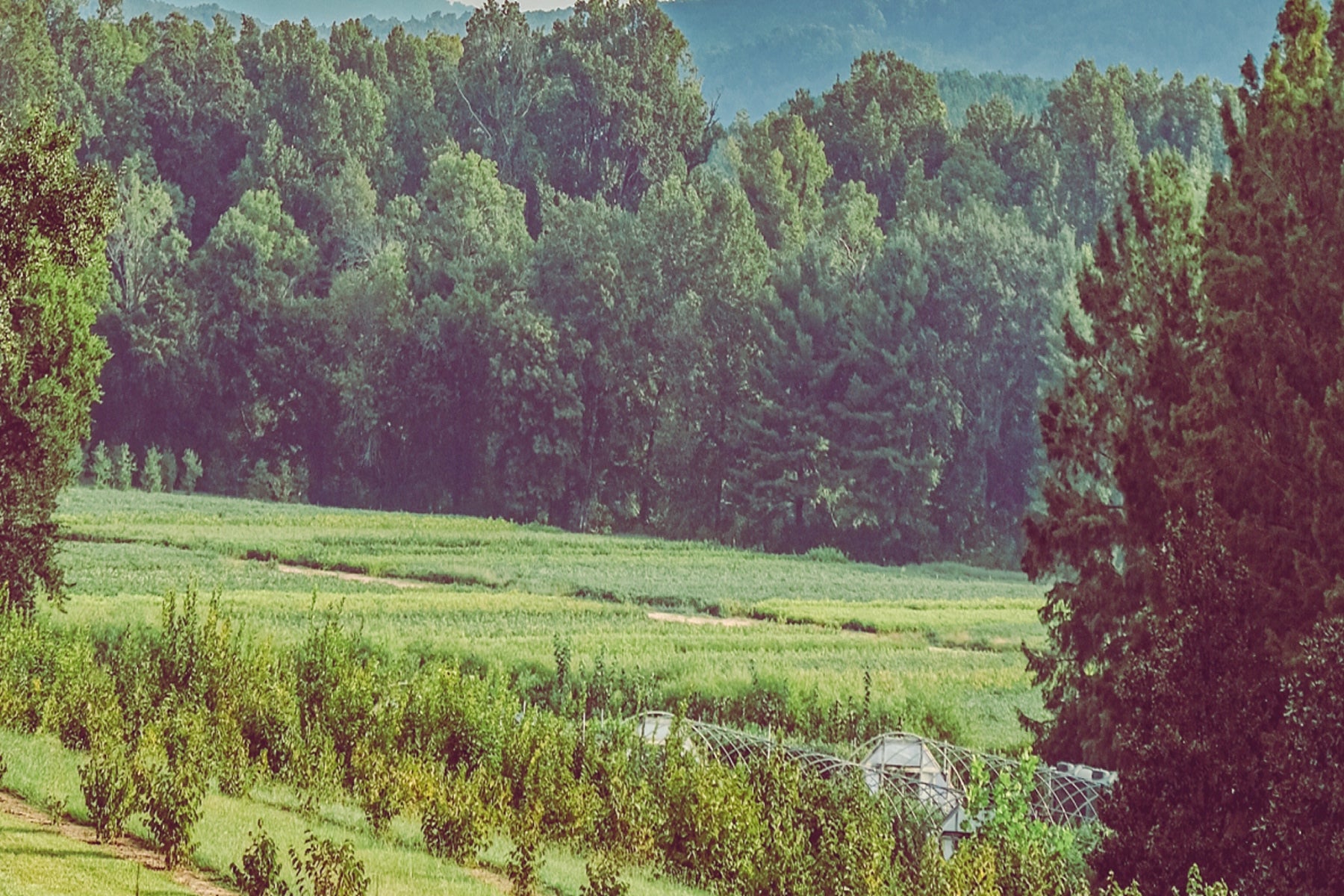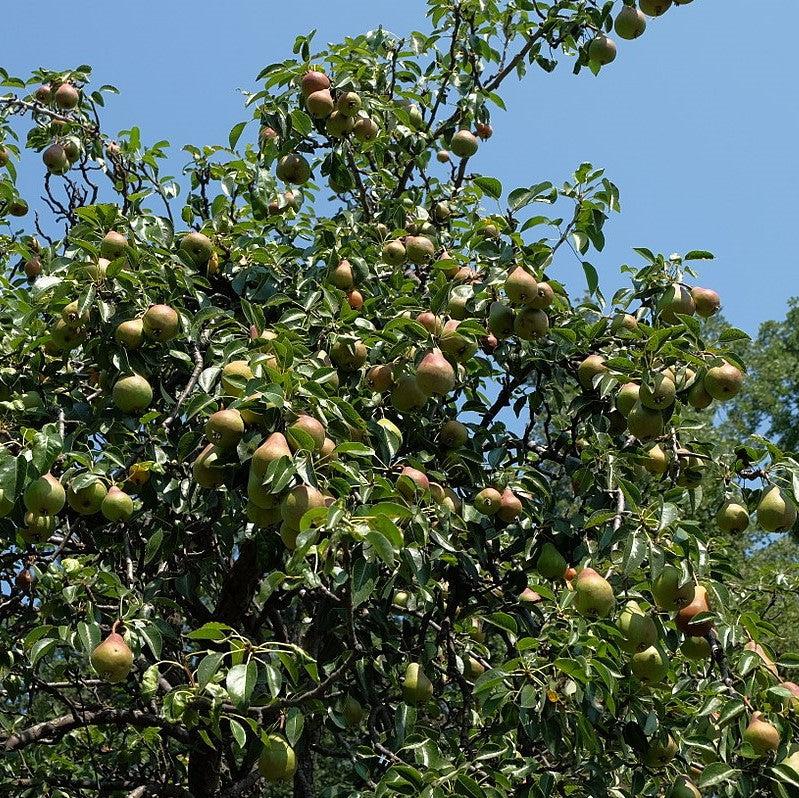-
The Ayers Pear is a cultivar that was developed in the United States. It was introduced in 1949 by the USDA Agricultural Research Service.
-
Fruit: The Ayers Pear produces medium to large-sized fruits that have a round to slightly elongated shape. The skin is smooth and yellow, sometimes with a slight blush of red. The flesh is juicy, sweet, and creamy in texture. It is considered a dessert pear and is delicious when eaten fresh.
-
Harvest Time: The Ayers Pear is typically harvested in late summer to early fall, depending on the region and growing conditions. It's important to pick the pears when they are mature but still firm, as they will continue to ripen off the tree.
|
Type: |
|
|
Height: |
20’ - 30’ |
|
Spread: |
12’ - 15' |
|
Spacing: |
15’ |
|
USDA Hardiness Zone: |
5 - 8 |
|
Culture: |
|
|
Bloom Color: |
White |
|
Season of Interest: |
MAINTENANCE NEEDS: High Maintenance. Needs regular watering. Pears are particularly prone to fire blight, especially after wet and warm springs. Other issues include canker, powdery mildew, scab, and anthracnose. Possible pests include pear psylla, coddling moth and borers. Fallen fruit can be messy if not harvested.
LANDSCAPE USES: Accents or Group Plantings, Borders, Wildlife Garden, Naturalized Areas, Ponds and Streams, Edible Gardens, and Containers.
COMPANION PLANTS: Thyme, Bee Balm, Corsican Mint
IMAGES: Anaxibia, Pyrus communis from Crimea, CC BY-SA 4.0, (2) Malchen53, Pyrus 3, CC BY-SA 3.0
* As plants have ranges in appearance they may not appear as the images shown.
